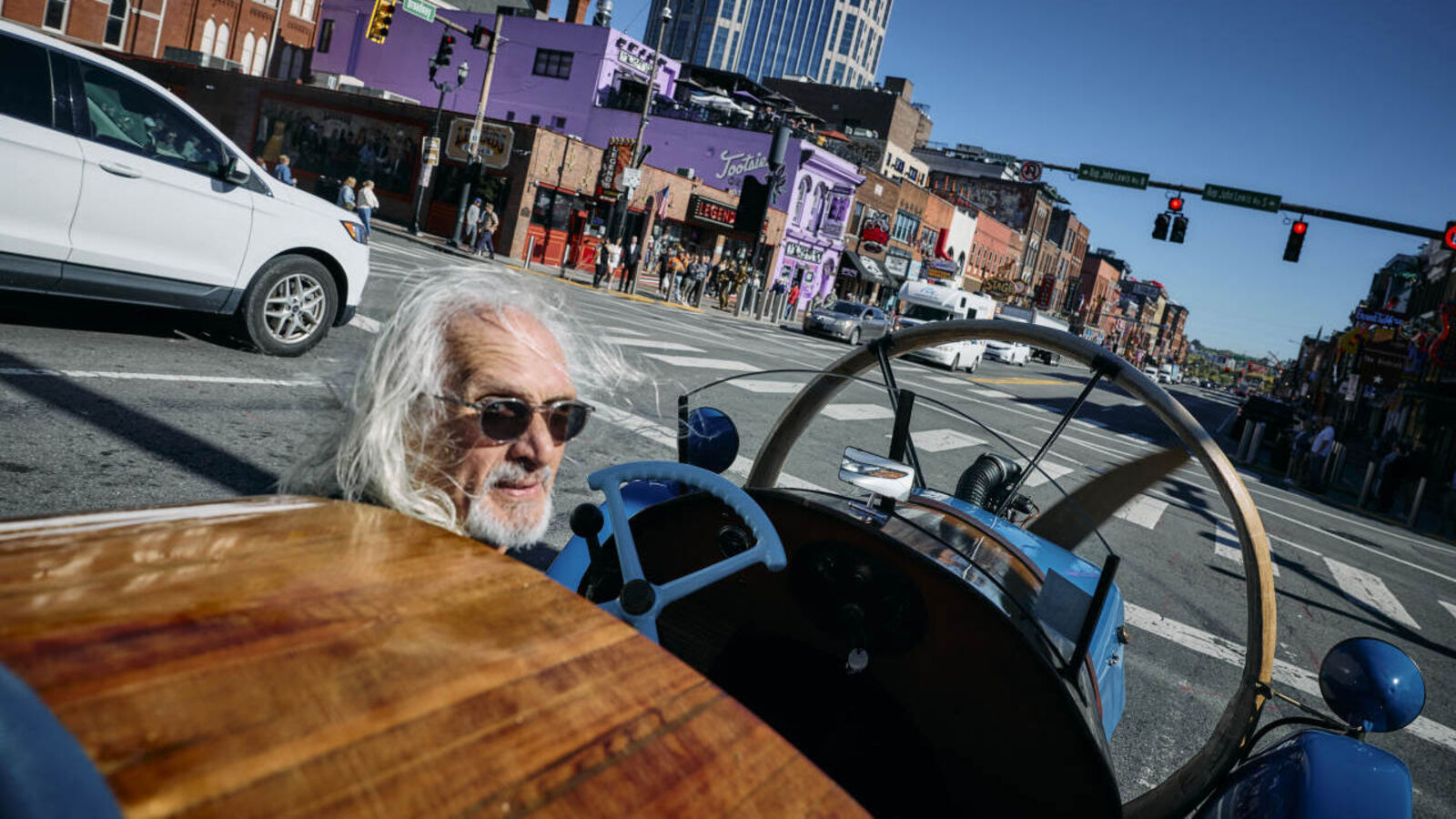This is a Mint Premium article gifted to you.
Subscribe to enjoy similar stories.
Jeff Lane, 65, the director of the Lane Motor Museum in Nashville, Tenn., on his 1932 Helicron, as told to A.J. Baime.
I have been called the “king of weird” and the “patron saint of oddball cars.” The museum I founded with my collection in 2002 has about 40 one-offs, a bunch of microcars—all kinds of things that, typically, you have not seen before. My background is in mechanical engineering, so while some people love the aesthetics of cars, I find beauty in the technology—the propulsion itself.
I have always been interested in propeller-powered cars. In the 1920s, aviation was in its infancy and airplanes were starting to carry passengers and mail. In 1927, Charles Lindbergh became the first to fly solo across the Atlantic. People were fascinated with airplanes. Some believed that propellers were the future not just of flight, but of cars and trains. A number of real, prototype, propeller-powered cars were produced. The most well-known was from a French inventor named Marcel Leyat around the time of World War I.
A friend of mine in Holland found the one-of-a-kind 1932 Helicron for sale in 2001. According to the information we have, this car was left in a barn in France for decades and was ultimately found and restored with many of its original components. My friend bought it for us and we have had it at the museum ever since. To me, one of the most fascinating things about the Helicron is that it is a mystery. We don’t know who the builder was. But we are still researching, and maybe someday we will find out.
People see it and think it is a joke, or they cannot believe that the propeller is the only means of propulsion, or they think it is meant to be a flying car. It was designed to be a functional vehicle, and it is a wonderful window into what life was like when it was made. Think of a place like Kansas in the 1930s. It was flat, it had few stop signs, probably no red lights and very little traffic. You could get the Helicron up to 40 mph and off you would go. It runs on normal gas, and it works simply.
There is no transmission, no clutch, and no differential. It has a foot brake, and a hand throttle on the left side, like a boat throttle. The throttle is on the side of the car so that if you come upon a hill, and you cannot not make it up, you could jump out and push the car while keeping control of the hand throttle. At the crest of the hill, you jump back in without losing control, so the vehicle would not take off without you.
It has rear steer, so it is a little wobbly. It has no front suspension so it doesn’t like rough roads. And when you are coming up to a traffic light, you want to keep some momentum, if you can.
I take the Helicron on rallies, or sometimes I drive the streets of Nashville around the museum, not far from downtown. When I give people rides, they have a blast, but they can see why this idea did not take off.
The Helicron accelerates like a snail, and it is as loud as an airplane.
The best thing about it? Everywhere it goes, it gives people a moment of joy.
Download the Mint app and read premium stories
Log in to our website to save your bookmarks. It’ll just take a moment.
You are just one step away from creating your watchlist!
Oops! Looks like you have exceeded the limit to bookmark the image. Remove some to bookmark this image.
Your session has expired, please login again.
You are now subscribed to our newsletters. In case you can’t find any email from our side, please check the spam folder.
This is a subscriber only feature Subscribe Now to get daily updates on WhatsApp











